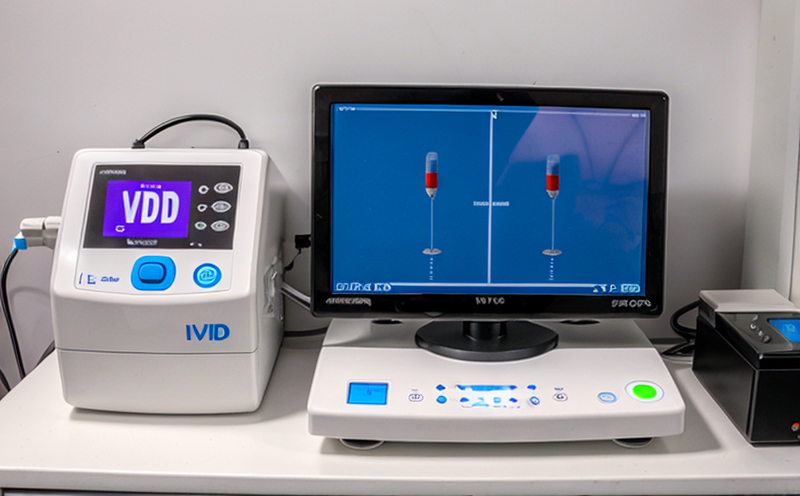Carryover and Cross Contamination Testing in IVD Systems
In vitro diagnostic (IVD) devices are critical tools that play a vital role in patient care, providing accurate and reliable test results. Ensuring the quality and reliability of these systems is essential to maintaining public health standards. One crucial aspect of this quality assurance process is carryover and cross contamination testing. This section delves into the intricacies of this testing method.
Carryover refers to the residual presence of analytes from one test sample to another within a single run or batch, which can lead to false-positive results if not controlled adequately. Cross-contamination, on the other hand, occurs when contaminants are transferred between different specimens or batches through improper handling or inadequate cleaning protocols.
These two phenomena can significantly impact the accuracy and reliability of IVD systems. For instance, carryover can result in elevated readings for low-level analytes, leading to incorrect diagnoses. Similarly, cross-contamination can lead to false negatives, where clinically relevant results are missed. Both scenarios have severe implications for patient care.
The ISO 13485:2016 standard outlines the requirements for a quality management system in the medical device industry, emphasizing the importance of preventing carryover and cross-contamination during testing. To meet these standards, laboratories must implement stringent protocols to minimize these risks.
Carryover and cross contamination can arise from various sources including improper cleaning procedures, insufficient sterilization methods, or inadequate sample handling. Proper design and validation of IVD systems are critical in preventing these issues. Laboratories use a variety of techniques such as automated washing cycles, ultraviolet light treatment, and dedicated reagent sets to minimize the risk.
In addition to these measures, regular calibration and maintenance of instruments ensure consistent performance across multiple runs. This is particularly important for high-throughput testing environments where errors can accumulate over time if not addressed promptly.
Testing methods used in carryover and cross contamination studies vary depending on the type of IVD device being evaluated. For liquid-based assays, researchers may use spiked samples to simulate real-world conditions while monitoring for any detectable residues after processing multiple batches. Solid-phase immunoassays often employ sandwich techniques with labeled antibodies to track the amount of analyte remaining post-processing.
Specimen preparation plays a crucial role in these tests as it directly influences both carryover and cross contamination rates. Properly trained technicians are essential for ensuring consistent results. They must follow standardized procedures when handling samples, including appropriate labeling, storage conditions, and disposal methods.
The choice of reagents and buffers also impacts test performance significantly; therefore, selecting high-quality materials is paramount to achieving accurate results. Additionally, automation can help reduce human error by standardizing processes throughout the entire workflow.
Benefits
- Enhanced Patient Safety: By eliminating carryover and cross contamination, IVD systems provide more accurate test results. Accurate diagnoses lead to better treatment outcomes for patients.
- Increased Compliance with Regulations: Adhering to international standards like ISO 13485 ensures that your organization remains compliant with regulatory requirements worldwide.
- Improved Efficiency: Reducing the incidence of false positives or negatives means fewer retests and less time wasted on erroneous results, thereby improving overall productivity.
- Better Reputation: Demonstrating a commitment to quality control helps build trust with healthcare providers and patients alike, enhancing your organization's reputation.
Quality and Reliability Assurance
To ensure the highest level of confidence in our testing results, we employ rigorous quality assurance measures. Our laboratories adhere to strict ISO standards for medical device testing, ensuring that every test is conducted under controlled conditions.
- Calibration: All instruments are regularly calibrated using certified reference materials to guarantee accurate measurements.
- Cleaning Protocols: Comprehensive cleaning protocols are followed after each batch of specimens processed, minimizing the risk of carryover and cross contamination.
- Sterilization Procedures: Proper sterilization methods are implemented for reusable equipment to prevent any potential contamination issues.
Customer Impact and Satisfaction
By offering reliable carryover and cross contamination testing services, we contribute significantly to the overall quality of healthcare delivery. Our customers benefit from more accurate diagnostic tools that enable them to provide better care for their patients.
We strive to exceed expectations by providing timely reports backed by robust data analysis. This not only enhances customer satisfaction but also fosters long-term relationships built on trust and reliability.





